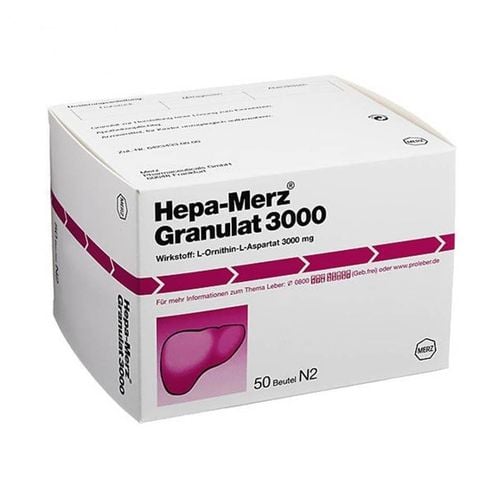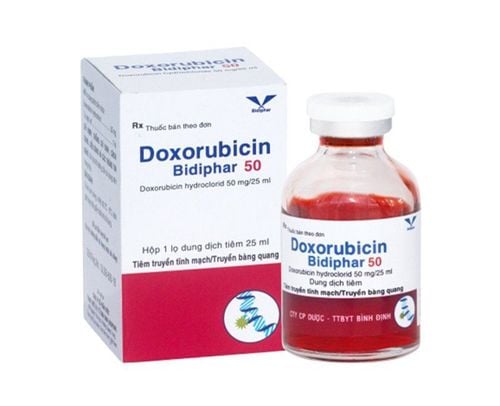This is an automatically translated article.
Aminoleban is available as an infusion solution or powder for oral administration. Depending on the dosage form and the purpose of use, the doctor will provide the appropriate drug for each patient. During the course of taking Aminoleban, the patient should closely monitor the body's reactions and follow the instructions recommended by the doctor.
1. What is Aminoleban?
Aminoleban 200ml belongs to the group of gastrointestinal pharmaceutical drugs, which provide essential nutrients for patients with liver failure. Currently, Aminoleban drugs are prepared in two main forms, including:
Powder for oral administration: Fine white powder, easily soluble in water with high protein content, with a BCAA/AA ratio reaching 45%. Solution for intravenous infusion: The solution is transparent, not visible to the naked eye and has been sterile based on the standards of the Ministry of Health. Aminoleban medicine 200ml has specific packing specifications as follows:
Intravenous form: Plastic bottle with capacity of 200ml or 500ml. Oral powder form: Packed with a net weight of 50g/pack. The outside of the product packaging usually clearly states the brand name, dosage information and the main design colors are white and bright orange.
2. Composition and effects of the drug Aminoleban
2.1. Composition of the drug Aminoleban Although it is collectively known as Aminoleban, however, the main ingredients in each dosage form still exist some differences, specifically:
Infusion Aminoleban 200ml and 500ml: Contains amino acids such as L-arginine.HCL, L-histidine.HCL.H2O, L-phenylalanine, L-methionine, L-threonine, Glycine , L-valine, L-lysine.HCL, L-leucine, L-tryptophan, L-isoleucine, L-serine, L-proline, L-cysteine.HCL.H2O, L-alanine, Sodium bisulfite and water for injection. These amino acids are easily distributed in the body from 6 to 72 hours. Ingredients Aminoleban oral powder: Includes vitamins, minerals (vitamins A, C, E, vitamins B1, B6, magnesium, zinc, sodium phosphorus, potassium, chloride), L-isoleucine, Maltodextrin and L-valine . In addition, the drug also contains rice oil, starch, sweetener, orange flavor and Sodium caseinate. 2.2. Uses of Aminoleban According to the manufacturer's instructions Otsuka JSC, Aminoleban 200ml intravenous infusion has the following main effects:
Helps to quickly improve coma classification for patients with hepatic encephalopathy due to chronic liver disease liver or liver failure. Helps reduce levels of Ammonia in the blood, while helping to improve nerve function. Helps to effectively regulate amino acid disorder in patients with liver failure. Helps provide essential nutrients for people with liver failure. For the powdered form of Aminoleban, it helps to bring the following effects:
Supplementing vitamins and minerals, fat, and protein for patients with liver / kidney failure. Helps correct imbalances of important amino acids in the body.
3. Indications and contraindications to the use of Aminoleban
3.1. Indications for use of Aminoleban Aminoleban medicine 200ml and powder for mixing is usually indicated for use in the following cases:
Intravenous infusion form: Used for patients with chronic liver failure suffering from hepatic encephalopathy or disease brain due to a number of other causes. Oral sachet form: Used for patients with debilitated body when experiencing liver / kidney problems. 3.2. The use of Aminoleban is contraindicated in the following subjects:
Patients with a history of allergy or hypersensitivity to any drug in the drug. Patients with heart failure/severe renal failure. The patient has a disorder of water-electrolyte metabolism. The patient experienced an abnormality in amino acid metabolism due to a number of non-liver related problems. Aminoleban is contraindicated in pregnant women.
4. Dosage and usage of Aminoleban
4.1. Dosage of Aminoleban The dosage for each dosage form of Aminoleban will be different, specifically:
Intravenous infusion form: Infusion from 500 - 1000ml / time. Dosage may be adjusted depending on the medical condition, weight and age of the patient. Oral form: Take 1-3 packets of Aminoleban a day, can be used alternately with main meals or before going to bed. 4.2. Instructions for using Aminoleban The following is a specific use for each dosage form of Aminoleban, including:
How to use Aminoleban infusion form: Inject the drug directly into the body through an intravenous line ( IV). The drug can be combined with some other compatible solutions as directed by the doctor. How to use Aminoleban powder pack: Dissolve one packet of Aminoleban 50g in 180ml of warm water (temperature about 50 degrees Celsius). Wait for the drug to dissolve and use it directly by mouth.
5. Things to note when using Aminoleban
When using Aminoleban, patients need to be careful about a few things:
Only use Aminoleban when prescribed by a doctor, avoid self-administered personal use. Also, always check the expiration date and color of the infusion solution carefully before taking Aminoleban. Caution should be exercised when administering Aminoleban to elderly patients due to markedly impaired renal and hepatic function. Patients with congestive heart failure, severe acidosis, dehydration, and asthenia require caution when using Aminoleban. Because Aminoleban contains chloride and sodium in addition to amino acids, patients should be closely monitored for electrolyte balance when taking large doses of Aminoleban. Always closely monitor the body's reactions while using Aminoleban to detect problems in time. When using Aminoleban for children, the dose should be reduced accordingly. Sterilize the patient by appropriate methods to avoid cross-contamination. The infusion solution should be warmed to approximately equivalent to the patient's body temperature when infusion in a cold environment. Only use Aminoleban infusion once, if not all infusion must discard the excess solution. Notes on the use of Aminoleban by pregnant or nursing women:
Although amino acids are safe and necessary in certain circumstances, some of the ways in which they are administered may present risks. Ideally, pregnant women should take Aminoleban 200ml and Aminoleban oral powder only with the approval of their doctor after carefully weighing the risks and benefits. In addition, Aminoleban 200ml can also be excreted in breast milk, so nursing mothers need to be careful when taking this drug. If the benefit that the drug brings is higher than the risk to the child, then you can take the drug as prescribed. During treatment with Aminoleban, patients may experience some of the following side effects:
Chest pain. Nausea, vomiting. Chest palpitations. Metabolic acidosis if Aminoleban is given rapidly or in large quantities. Rash. Fever. So cold. Vascular pain. Headache . The side effects of Aminoleban can progress to serious, life-threatening complications, so patients need to be very careful when taking them. Tell your doctor right away if you notice any of the symptoms listed above after taking Aminoleban.
Aminoleban can have an interaction reaction that increases the risk of side effects or reduces the effectiveness of the active ingredient in the drug when used in combination with some other products. Before using Aminoleban, patients should provide all information about the drug or supplement they are taking to their doctor to rule out the possibility of an interaction.
Please dial HOTLINE for more information or register for an appointment HERE. Download MyVinmec app to make appointments faster and to manage your bookings easily.













